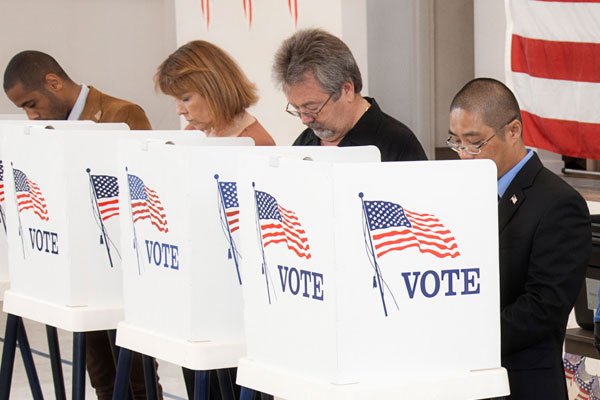
You don’t have to share Evgeny Morozov’s derision for “technological solutionism” to see it in practice. The idea of the technological quick-fix is on display in the post-election period. We should be chary of simplistic proposals, but technology can improve election administration and, as importantly, build confidence in election results. The challenge is applying means to well-chosen ends.

Given the tight race and the not-immediately certain outcome in the 2020 presidential race between Donald Trump and Joe Biden, it did not take long to see the entirely predictable tweet about conducting elections via the blockchain. Changpeng Zhao, founder and CEO of cryptocurrency exchange Binance, provides the superlative example. He said that a blockchain-based mobile app with proper user identification built in could provide reliable election results while protecting privacy. He is correct — and undoubtedly sincere — but saying so is akin to beginning your trip to Mars by uttering, “It is possible to go to Mars.” You come no closer to the red planet by saying so.
Should there be blockchain voting? “We are nowhere near ready for this,” said another tweet, echoed and detailed by another.
Voting is a “four-domain problem,” according to another tweet on the topic: “technical, cultural, political, and legal. Even if you solve the technical (dubious at best) good luck with the other three.” That’s intuitive, though I don’t know quite how to divide the problem into those quadrants.
In an area I’ve studied — identification — voting is pretty tricky to administer. You can’t “KYC” everyone, because a significant minority of voters does not participate in the financial services system. Another cohort may have multiple identities, honestly or not. A national policy strengthening ID systems for voting would tend to create a national ID system, which is undesirable and costly. And you still wouldn’t know whether people have been disqualified from voting without further integrating the ID system with criminal records systems, for example.
Low-tech, in-person voting naturally protects against voter
fraud. In the past, I voted at a location where the election administrators
included my mom and my former soccer coach. That brought my chances of involvement
in voter fraud, as either a perpetrator or victim, quite low. Last week, my
wife left her driver’s license in the car, and an administrator offered to save
her a trip outside, asking, “Does Annette know you?”
Motor-voter and vote-by-mail have reduced some protections
against voter fraud, but the extent to which they have increased risks to
election security are quite contextual. And, for me, context is everything.
Remember federalism. We have localities where heavier security measures may be
necessary, and we have localities where security is not so badly needed. Voting
can be easy and fast.
A global solution I’ve run across (yes, thanks to another tweet) is Microsoft’s ElectionGuard. That is a system to assure people that their votes have been recorded unchanged.
“Each vote is encrypted and given a unique identifier,” says Microsoft’s write-up. “The voter is given a tracking code that lets them check that their vote goes through the system unchanged and ends up in the final tally.” I can imagine — though I haven’t reviewed — the encryption system that would do that. Risk-limiting audits can efficiently confirm to a very high likelihood that votes have not been tampered with. To protect the secret ballot and frustrate vote-buying and coercion, ElectionGuard can’t be used to reveal what a person’s vote was. That means that it requires a lot of user trust. Would people trust it?
Never mind the question, because we are down the solutionist
path. ElectionGuard is a solution to one particular type of problem: the
changing or trashing of individual votes. It doesn’t (apparently) protect
against impersonation fraud, ballot-box stuffing, falsified reporting of vote
totals at steps beyond the ElectionGuard system, or others.
If you wanted to throw an election, the action would be in election
fraud, not voter fraud. It’s costly and slow to send people in to polling
places to vote in others’ names. Instead, you could just convince someone or
some machine to add votes.
Which brings us back to means and ends. The technology
solutions that see first adoption should be the ones that address the most
significant problems in the most direct way. Voting seems to be administered
pretty well most places in the US, so it’s not obvious what problem should have
the highest priority.
ElectionGuard is a solution that may actually solve a different problem than it seems. By giving people an outlet for their concerns and letting them check that their own votes were accurately counted, it could make people more confident of election results even if it doesn’t have a material effect on actual election security.
The post Can tech fix elections? appeared first on American Enterprise Institute – AEI.
